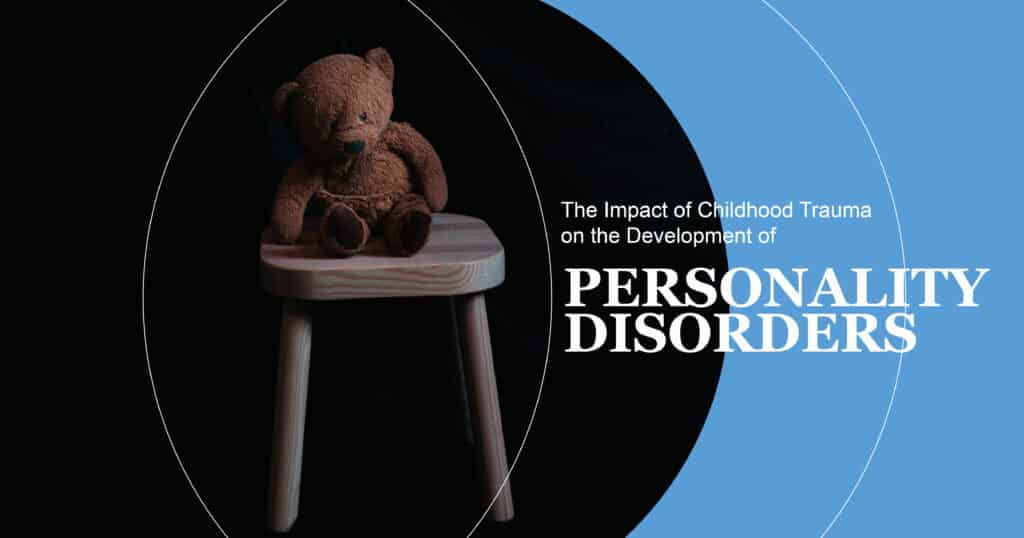Ever wondered how a tree, once bent in a storm, grows twisted and unique? Similarly, the storms of childhood trauma can shape the growth of our inner selves, leading to complex and often misunderstood outcomes like personality disorders. The roots of these disorders often run deep into the soil of our past, nourished by experiences of neglect, abuse, or loss. It’s a thorny topic, but fear not—we’re here to tread gently through the brambles and shed some light on “The Impact of Childhood Trauma on the Development of Personality Disorders.” So, let’s embark on this journey with open hearts and minds, ready to understand and empathize.
The Echoes of Early Experiences
Childhood isn’t just a time of growth and learning; it’s the bedrock of our emotional and psychological development. When trauma interrupts this critical period, it can leave lasting imprints.
The Seeds of Distress
- Neglect and Abuse: These are not just bad memories; they’re architects of the psyche, shaping perceptions of self and others.
- Loss and Bereavement: Losing a loved one can feel like losing a piece of oneself, creating fissures in the foundation of our emotional world.
- Bullying and Social Exclusion: These experiences can color social interactions, painting them with a brush of fear and mistrust.
The Fragile Foundations
When the groundwork of trust and security is shaken, the building blocks of personality can be laid askew. This misalignment, often invisible to the naked eye, can lead to the development of personality disorders.
Tracing the Threads: From Trauma to Personality Disorders
The journey from childhood trauma to personality disorders is a winding path, with many forks and detours. Let’s trace some of these threads, understanding how they weave into the tapestry of the psyche.
The Blueprint of Borderline Personality Disorder (BPD)
Often linked to early emotional instability and neglect, BPD is like a house built on a fault line, where fear of abandonment and intense emotional storms are frequent visitors.
The Construction of Antisocial Personality Disorder (ASPD)
ASPD might be seen as a fortress built to protect against the outside world, often as a response to harsh, abusive treatment in early life. The walls are high, and empathy is the moat that was never filled.
The Molding of Narcissistic Personality Disorder (NPD)
Narcissism can be like a mirror, reflecting a need for admiration that masks deep-seated feelings of inadequacy—often the result of neglect or excessive praise that skews self-perception.
Navigating the Aftermath: Healing and Hope
Understanding the impact of childhood trauma on personality disorders is crucial, but it’s equally important to chart the course towards healing. The journey is long, and the path is often steep, but with support and understanding, the climb becomes possible.
Therapeutic Pathways
- Psychotherapy: A beacon of hope, offering a space to explore and understand the past, while building healthier ways of relating to oneself and others.
- Cognitive-Behavioral Therapy (CBT): A map for changing thought patterns, teaching that though the past may shape us, it does not define us.
- Dialectical Behavior Therapy (DBT): A guide for managing emotions and relationships, particularly effective for those with BPD.
The Power of Support
- Support Groups: Finding community can be like discovering a clearing in the forest, a place of understanding and shared experience.
- Family Therapy: Sometimes, the whole family needs to journey together, repairing and strengthening the bonds that trauma has tested.
FAQs: Shedding Light on Shadows
- Can childhood trauma be directly linked to all personality disorders?
- Not directly to all, but many personality disorders can be traced back to traumatic childhood experiences. The relationship is complex, woven from many threads.
- Is recovery possible for individuals with personality disorders stemming from childhood trauma?
- Absolutely. With the right support and treatment, individuals can learn to navigate their inner worlds more healthily, though the journey is often challenging and ongoing.
- How can loved ones support someone dealing with the effects of childhood trauma?
- By offering a steady presence, unconditional support, and understanding. It’s also crucial to encourage professional help and, when necessary, to seek support for oneself.
Beyond the Shadows: A Path Forward
As we reach the end of our exploration into “The Impact of Childhood Trauma on the Development of Personality Disorders,” it’s clear that the shadows cast by early trauma are both deep and long. However, within these shadows lies the potential for growth, healing, and understanding. By shining a light on these issues, we not only illuminate the paths of those affected but also pave the way for a more compassionate and empathetic society.




